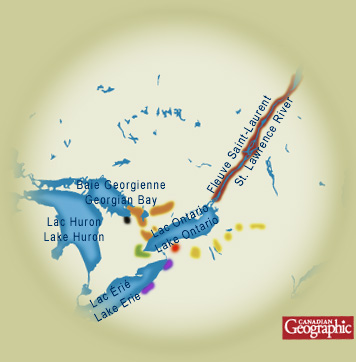|
|
An Ancient Bond with the LandPeople of the Longhouse"This Old Island"The Iroquoian people called their world "Turtle Island" or "This Old Island" (Wendat Ehen in Huron-Wendat), a reference to the turtle's back on which Sky Woman landed in the Iroquoian creation story. The Iroquoian nations of the lower Great Lakes-St. Lawrence region spoke related languages, and shared an agricultural way of life. They lived in villages made up of large wooden longhouses, surrounded by defensive palisades. The two most widely known Iroquoian groups were both confederacies of separate nations: the Huron-Wendat, who lived between Lake Ontario and Georgian Bay, and the Iroquois or Five Nations (later Six Nations), who lived south of the St. Lawrence Valley. Other Iroquoian nations included the Khionontateronon (Petun), the Attiuoindaron (Neutral), the Ahouenrochrhonon (Wenro), the Eriehronon (Erie) and the St. Lawrence Iroquoians.
| ||||||||||||||||||||||||||
